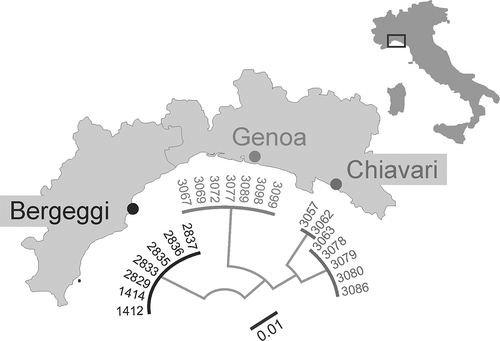Figures & data
Table I. List of primer pairs used in the present study.
Figure 1. Acerentomon italicum Nosek, Citation1969 Head. A, Dorsal view, setae sd4 and sd5 are labeled, arrow indicates pore; B, detail of frontal pore (scanning electron microscope, SEM); C, pseudoculus (from Nosek Citation1969); D, canal of maxillary gland (from Nosek Citation1969); E, maxillary glands (interference contrast microscope); F, maxillary and labial palpus (from Nosek Citation1969); G, labial palp sensillum (SEM).
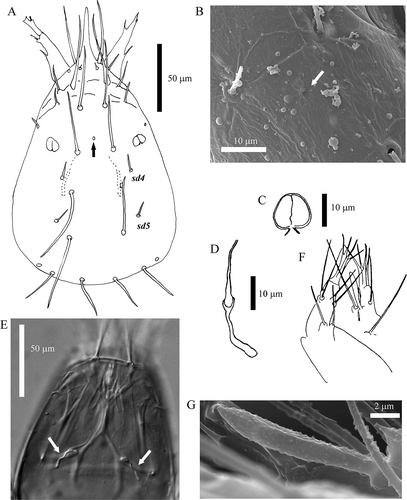
Figure 2. Acerentomon italicum Nosek, Citation1969 Foretarsus: main sensilla (a-g, a′-c′, t1, t3) and setae α7 and γ3 are labeled (see text). A, Exterior view, arrows indicate pores (from Nosek Citation1969); B, external side sensilla (interference contrast microscope); C, external side sensilla, arrow indicates pore near sensillum c (scanning electron microscope, SEM); D, detail of claw (SEM); E, pore near sensillum t3 (SEM); F, interior view.
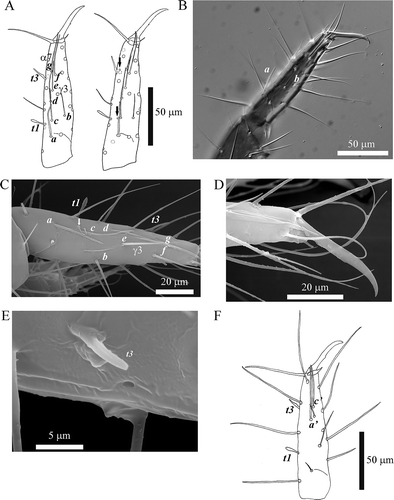
Figure 3. Acerentomon italicum Nosek, Citation1969. Scanning electron microscope (SEM) details of A, hind legs; B, abdominal appendage I; C, abdominal appendage III; D, striate band on abdominal segment VIII.
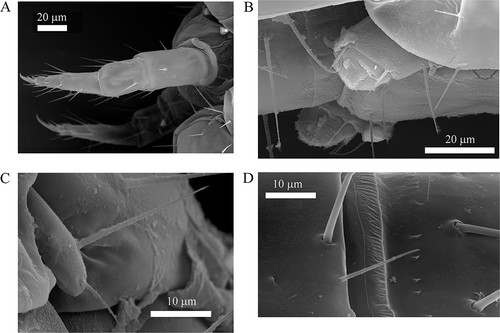
Table II. Chaetotaxy of Acerentomon italicum Nosek, Citation1969.
Figure 4. Acerentomon italicum Nosek, Citation1969. Tergites: pores (al = anterolateral, asl = anterosublateral, l = lateral, psl = posterosublateral, psm = posterosubmedial, sam = sternal anteromedial, spsl = sternal posterosublateral, spsm = sternal posterosubmedial), anterior (A) and posterior (P) setae are labeled. A, nota; B, chaetotaxy of larva II nota (interference contrast microscope); C, abdominal tergites V–VII; D, detail of pores on tergite VII (scanning electron microscope, SEM); E, porotaxy on abdominal segment VII (interference contrast microscope).
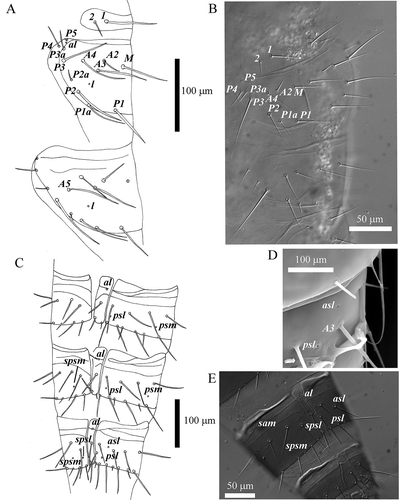
Figure 5. Acerentomon italicum Nosek, Citation1969. Last abdominal segments: pores are labeled (ac = anterocentral, psm = posterosubmedial). A, tergites VIII–XII; B, comb on tergite VIII (from Nosek Citation1969); C, hind border of pleurite VIII (from Nosek Citation1969); D, detail of pore psm on tergite VIII (scanning electron microscope, SEM); E, detail of hind border of pleurite VIII (SEM).
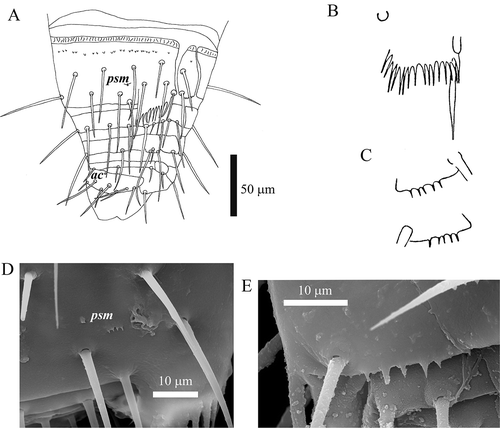
Figure 6. Acerentomon italicum Nosek, Citation1969. A, prosternum; B, mesosternum, sternal central (sc) pore is labeled; C, abdominal sternites V–VII, pores are labeled (sam = sternal anteromedial, sc = sternal central, spsl = sternal posterosublateral, spsm = sternal posterosubmedial); D, pleural pectines VI and VII (from Nosek Citation1969), anterolateral (al) pore is labeled; E, pleural pectines VI (interference contrast microscope).

Figure 7. Acerentomon italicum Nosek, Citation1969. A, abdominal sternites VIII–XII, sternal anterolateral (sal) pores are labeled; B, male squama genitalis (from Nosek Citation1969); C, female squama genitalis; D, detail of female squama genitalis (interference contrast microscope); E, example of chaetotaxy anomaly of sternite VIII, with four posterior setae (interference contrast microscope).
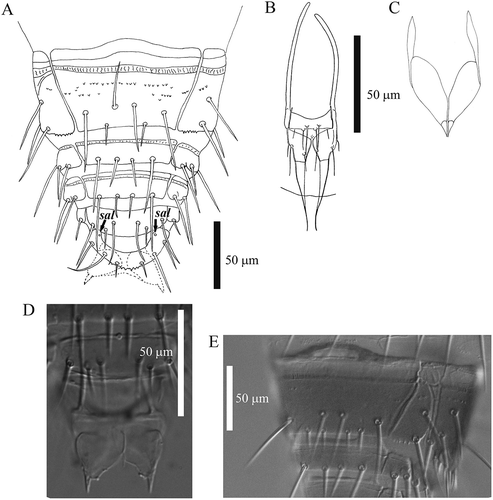
Table III. Porotaxy of Acerentomon italicum Nosek, Citation1969. Legend: ac = anterocentral, al = anterolateral, asl = anterosublateral, l = lateral, psl = posterosublateral, psm = posterosubmedial, sal = sternal anterolateral, sam = sternal anteromedial, sc = sternal central, spsl = sternal posterosublateral, spsm = sternal posterosubmedial.
Table IV. Main measures and ratios of pre-imaginal stages of Acerentomon italicum Nosek, Citation1969; measures are given in µm (mean values ± standard deviation, variation interval in parentheses). Legend: LR = labrum ratio, PR = pseudoculus ratio, CF = distal part of “filamento di sostegno” (= maxillary gland) ratio (see text), TR = tarsus ratio, BS = sensilla t1 position relative to the base of tarsus (see text).
Table V. List of representatives of Acerentomon italicum, used primer pair and Barcode of Life Data systems (BOLD) accession number analysed in the present study.
Figure 8. Acerentomon italicum Nosek, Citation1969. DNA Barcoding. Neighbour-joining (NJ) tree based on Kimura 2 Parameter (K2P) distances from 21 representatives of A. italicum from three collection sites in Liguria.
